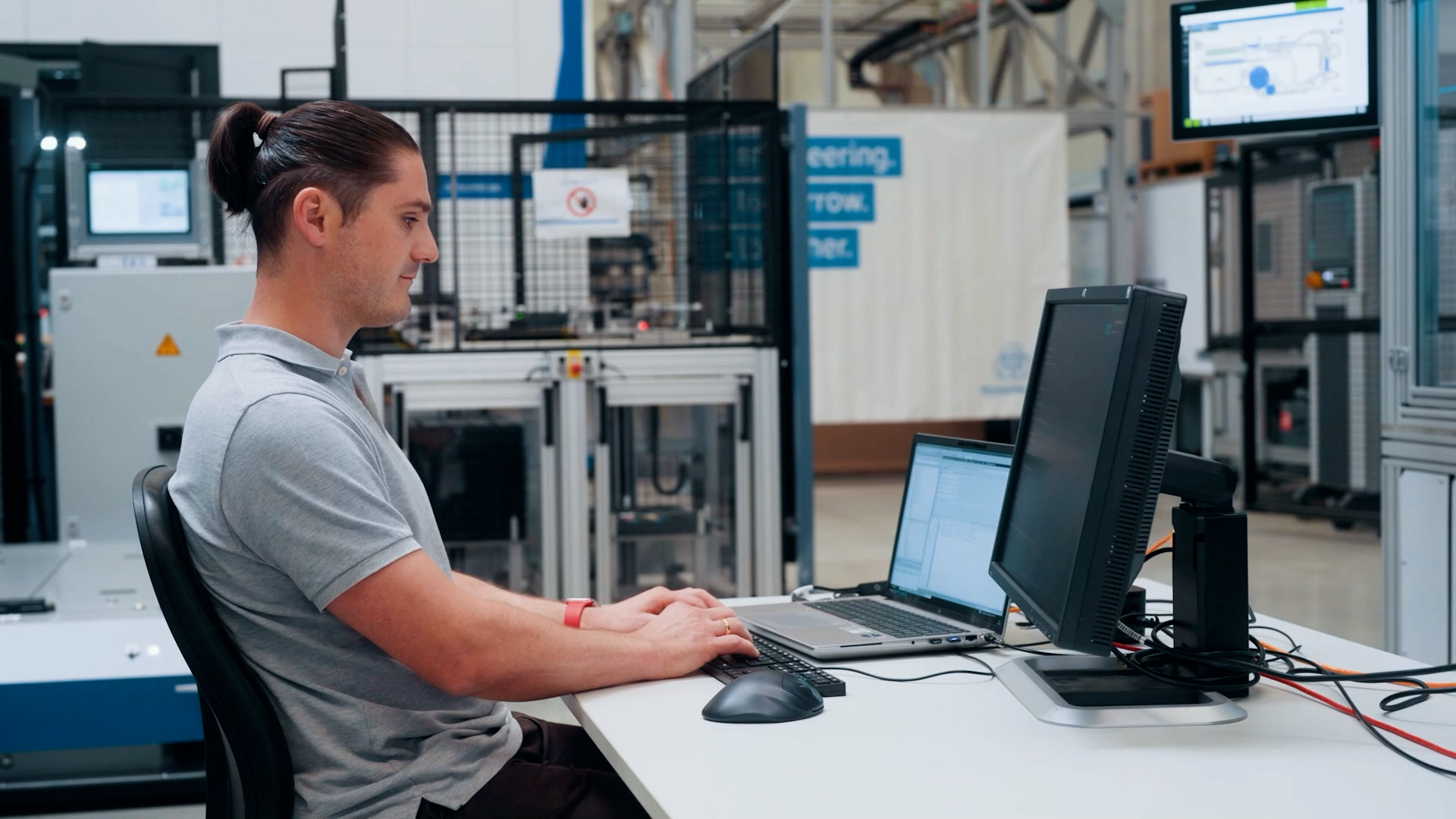
How AI is helping Siemens and thyssenkrupp bridge skilling gaps in manufacturing
CHEMNITZ, Germany – In a small corner of a vast thyssenkrupp factory in this industrial town, an engineer was talking to a machine.
“From the beginning I was only speaking to it in English, but today I discovered it speaks German quite well,” said Marcus Schoenherr, one of the thyssenkrupp engineers using the Siemens Industrial Copilot to program and test this machine. The Industrial Copilot is a generative AI-powered assistant that was developed through a collaboration between Siemens and Microsoft. Microsoft’s Azure OpenAI Service powers the copilot’s capabilities.
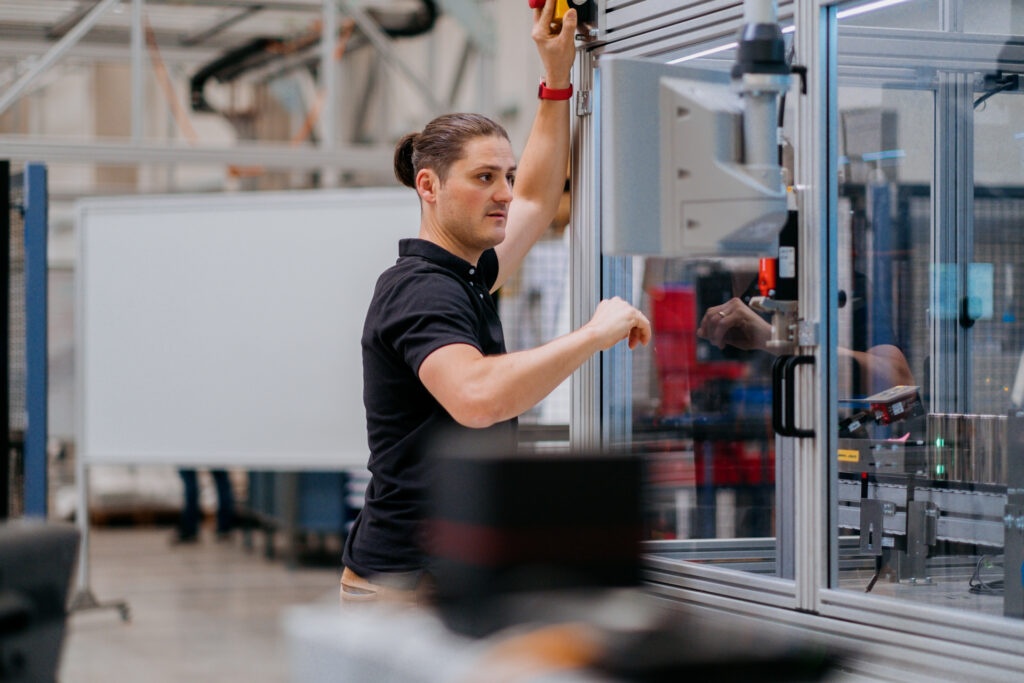
“When I start with the copilot I usually begin with a welcome and introduce myself,” Schoenherr said. “But I wondered if it would understand the typical northern German word ‘Moin’ which means good morning, among other things. And then suddenly the copilot answered in German.” Schoenherr then spent the rest of that session interacting with the machine using his native language.
This project at thyssenkrupp is part of an effort to use the power of AI to compensate for a shortage of skilled workers in manufacturing in Germany, Europe and many other countries, including the United States.
Schoenherr sits at a desk in front of the battery testing machine, enclosed in a glass box the size of a minibus, and the contraption pulses with red and green lights that illuminate the cells that flow by on a conveyor belt, while digital cameras and sensors measure and test each one. These cells will eventually comprise the power pack in an electric car or truck. If one cell is flawed, the entire power source will fail, costing the carmaker thousands of euros.
Schoenherr has been working with the Siemens Industrial Copilot, powered by Azure OpenAI Service with GPT-4, since July. The application was developed during the past year and a half. In collaboration with Siemens, thyssenkrupp has been working on adapting the copilot to the specific requirements of thyssenkrupp’s machinery. Siemens now has more than 100 other customers evaluating and testing the Industrial Copilot.
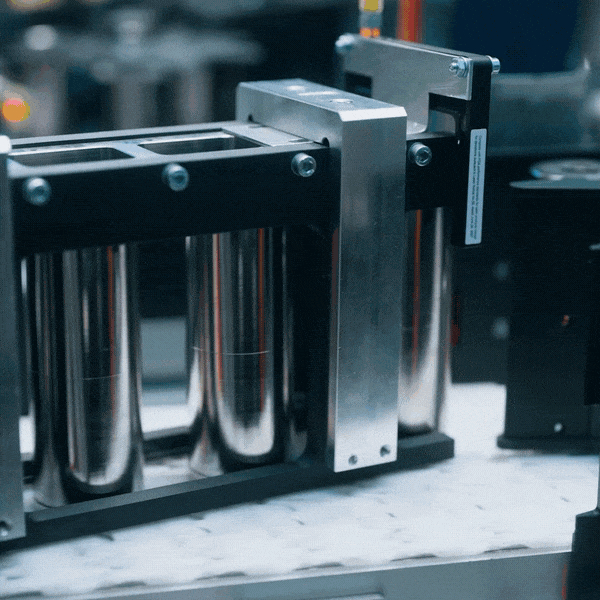
The Siemens Industrial Copilot has two facets. Schoenherr has focused on using the engineering copilot, which helps him create the automation code that directs the machine’s operation. The second is the operations copilot. It allows workers and engineers to communicate with the machine while it is operating. If one step in the process is not working, the operator can ask the Siemens Industrial Copilot what is wrong by typing in a question. The copilot can then tell him how to solve the problem. Eventually the operator will be able to speak with the machine, using copilot’s voice recognition.
Siemens sees the Industrial Copilot as something that can be rolled out in different versions to support workers throughout the industrial process, from design to planning, from engineering to operations and services; decisionmakers at thyssenkrupp also see it as a versatile application that they would like to apply broadly.
Addressing a shortage of skilled labor
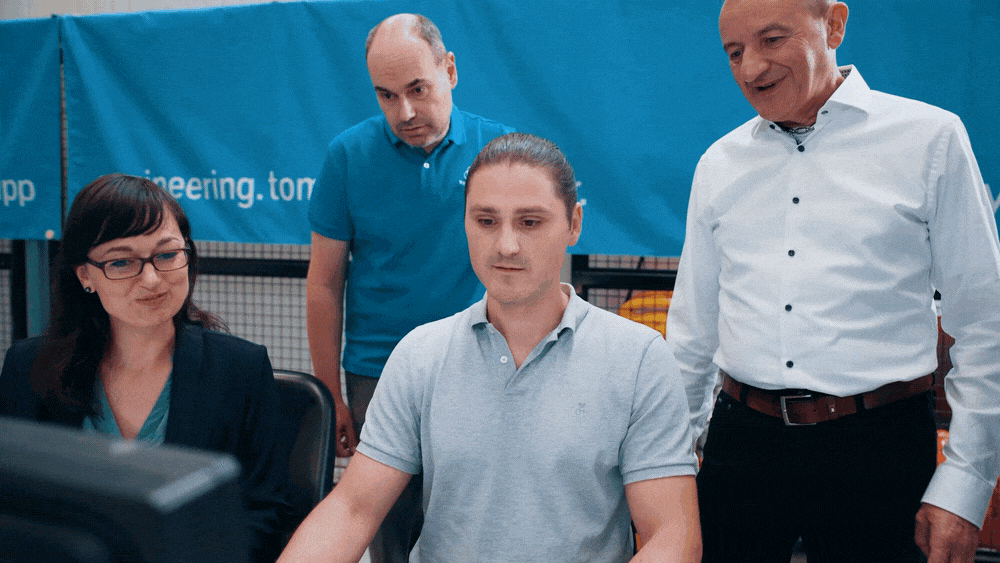
Like many large manufacturers in Europe and elsewhere, thyssenkrupp is confronting challenges that inspire new ways of thinking.
“We’re facing a shortage of skilled workers, not only in Germany but in Europe and the US,” says Marcel Pfeiffer, thyssenkrupp’s director of digital factory solutions. “We want to enable less experienced engineers to be able to write coding in a short time, and we want to boost efficiency to a very high level.”
The multinational plans to roll out the Siemens Industrial Copilot into its standard development and manufacturing process globally in 2025, Pfeiffer says.
At this plant, spread out over an area bigger than a soccer field, engineers and workers build linked systems of machines to make electric vehicle batteries. These assembly lines are destined for vehicle manufacturers in Europe and Asia. While thyssenkrupp is planning to use the engineering copilot worldwide initially, it is still in the testing phase of the operational copilot. Pfeiffer says thyssenkrupp will also be introducing the operations copilot globally, depending on customer demand and other factors.
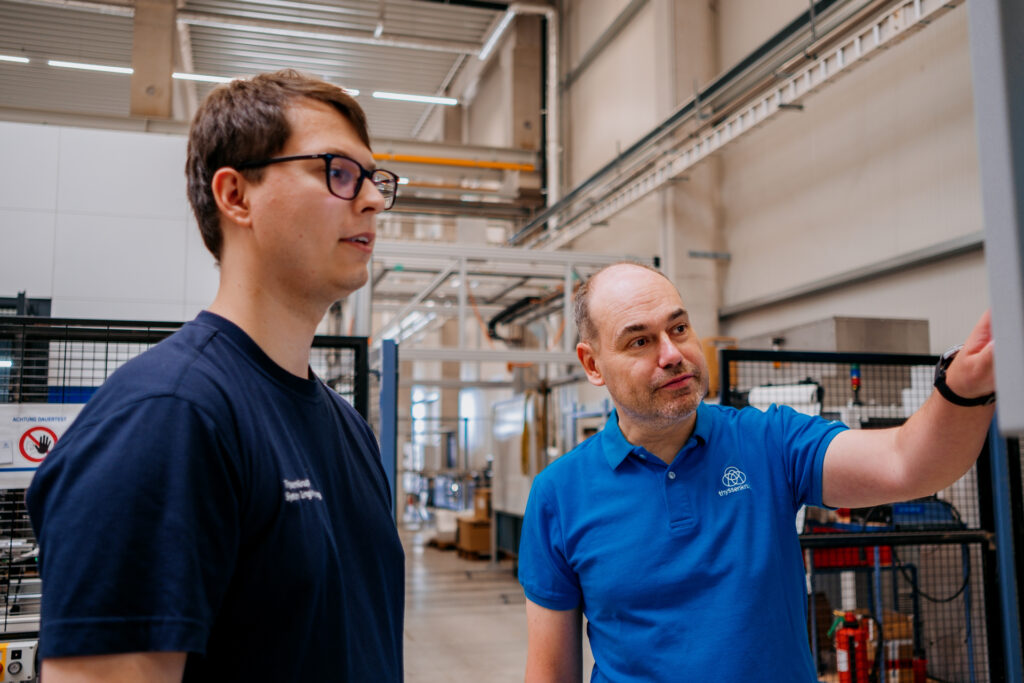
Erik Scepanski of Siemens was also thinking about the shortage of skilled labor when he and other engineers at Siemens began developing the Industrial Copilot in 2022. Scepanski, 29, is Siemens’ innovation manager for factory automation. He started his career as an electrical engineer programming machines the old-fashioned way, working with complex machines at Siemens plant near Essen, Germany.
In that job, he often turned to a mentor who had been working with the machines for decades.
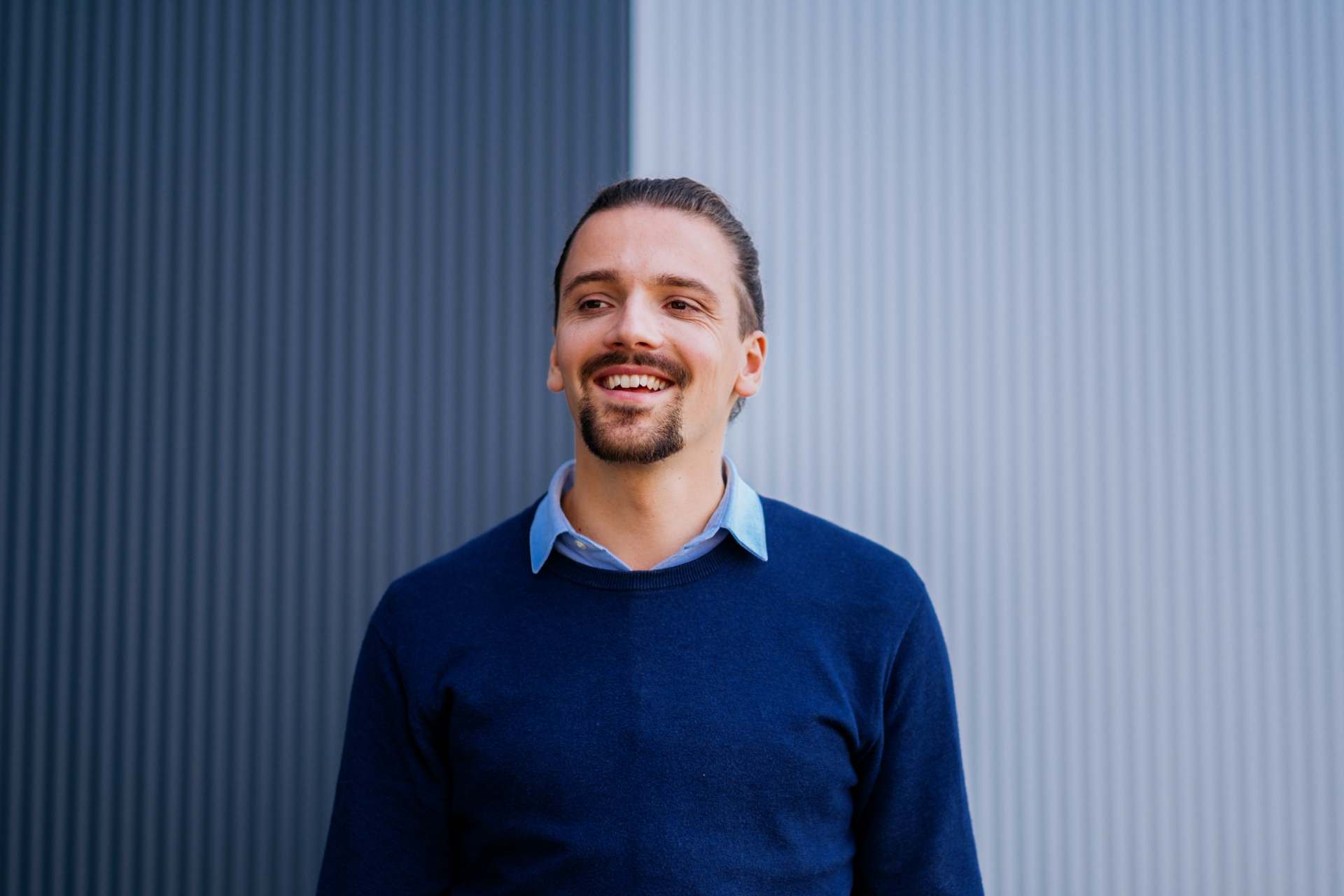
“I talked to a lot of customers during the last one and a half years, and what they told me is their biggest challenge is that they don’t find skilled labor, especially when it comes to automation engineers.”
Erik Scepanski is Siemens’ innovation manager for Factory Automation. Photo by Anastasia Pivovarova for Microsoft.
“As a beginner, I did not have a clue about how to program machines,” he says. “And I always went back to him and asked him questions, how to do this, how to do that, and he always knew what to do. But he had his own projects, and I didn’t want to bother him so much.”
An older generation of engineers, like Scepanski’s mentor, are nearing retirement.
“I talked to a lot of customers during the last one and a half years, and what they told me is their biggest challenge is that they don’t find skilled labor, especially when it comes to automation engineers.” Scepanski cited a Korn Ferry study that suggests that there will be a global shortage of as many as 85 million skilled workers by 2030.
A way to talk to machines
When Scepanski and other Siemens engineers started experimenting with OpenAI’s large language models, they saw the potential to bridge that generation gap, both for the engineers programming the machines and for the operators who run them on the factory floor. When Microsoft, a longtime partner with Siemens, integrated the technology and created Azure OpenAI Service, Scepanski saw an incredible opportunity to combine Siemens’ industrial and technological expertise with this new set of tools.
“Talking to a machine and getting feedback in an almost human way is something that really resonates with people,” Scepanski says. “We see a lot of potential to include the knowledge from the people who will retire, but also to onboard the colleagues who are not familiar with the machines and make it easier to understand how to solve issues.”
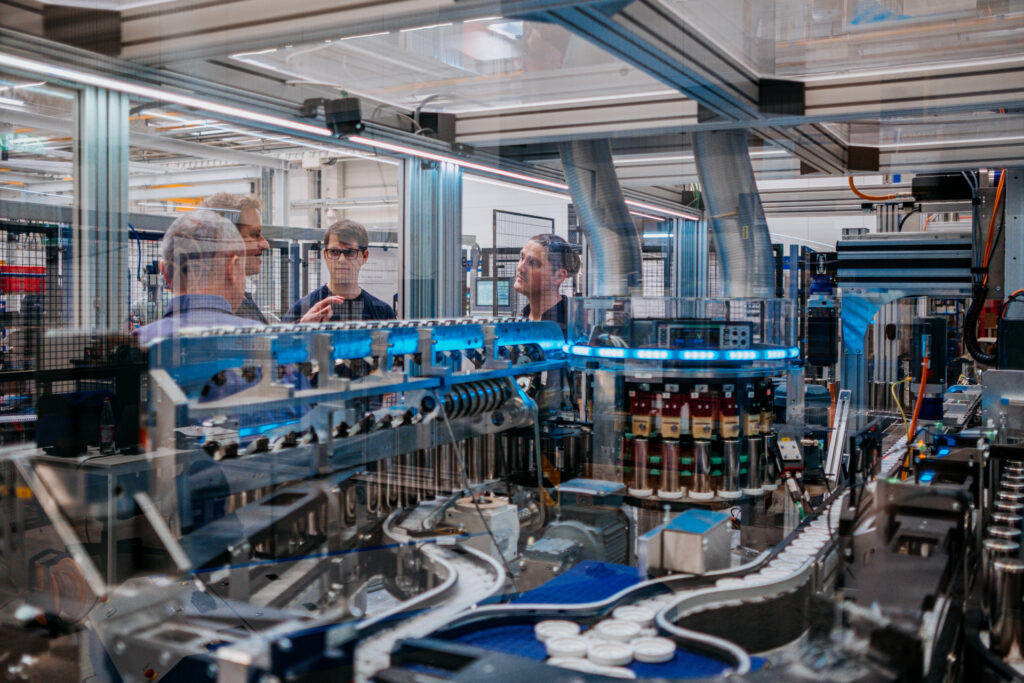
Schoenherr of thyssenkrupp said he’s excited about the potential of the Siemens Industrial Copilot, both for engineers like him and for the operators of the machines. The copilot provides a solid base, he says; then it is up to engineers and programmers at thyssenkrupp to create the databases that the copilot will draw from to help program and run the machines as well as doing the programming needed for each component in an assembly line.
Within its version of the Siemens Industrial Copilot, thyssenkrupp controls its proprietary data, and all the data is stored in its private cloud on Azure. Data specific to its products are not shared with Siemens.
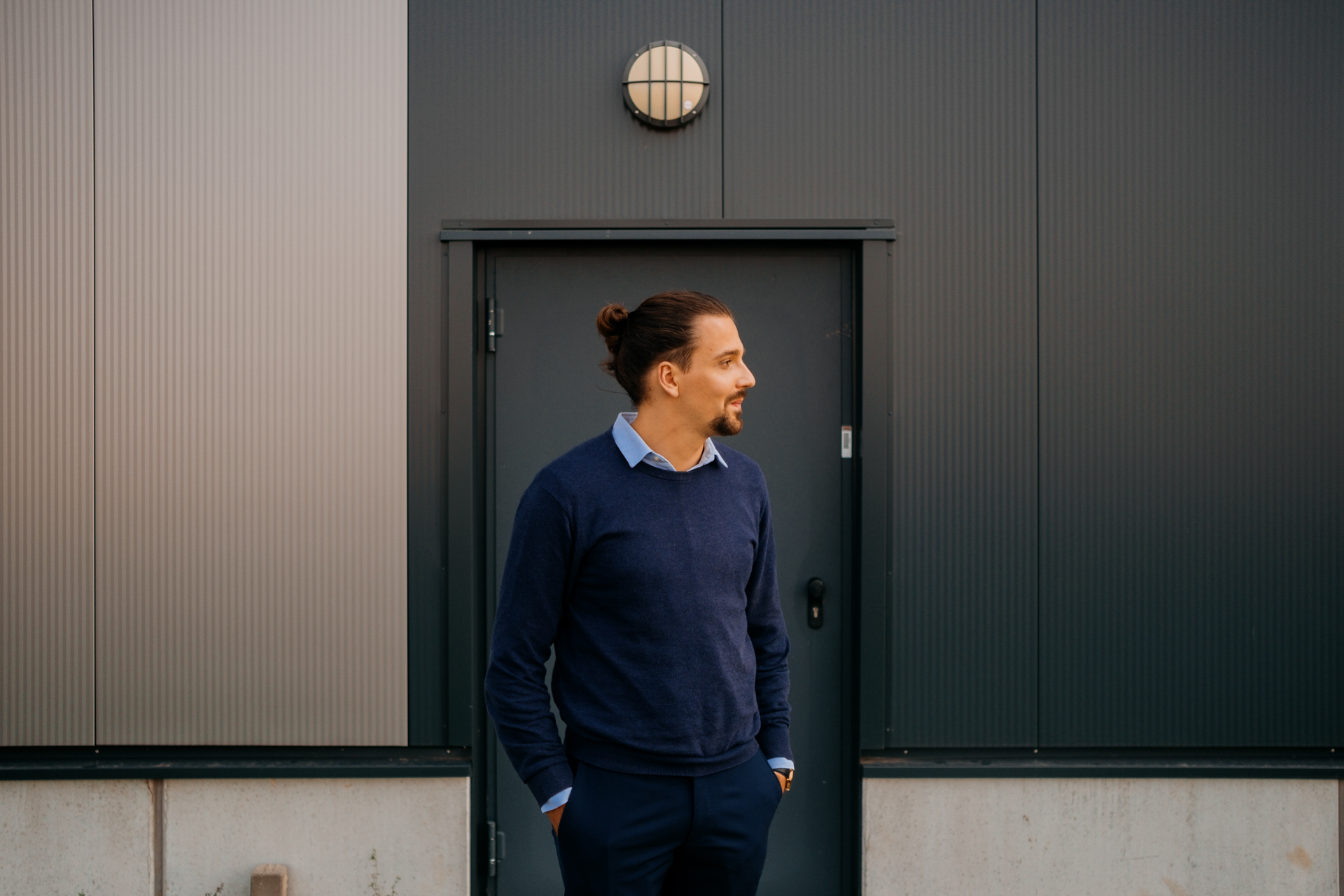
“Talking to a machine and getting feedback in an almost human way is something that really resonates with people,”Scepanski says. “We see a lot of potential to include the knowledge from the people who will retire, but also to onboard the colleagues who are not familiar with the machines and make it easier to understand how to solve issues.”
Erik Scepanski is Siemens’ innovation manager for Factory Automation. Photo by Anastasia Pivovarova for Microsoft.
Putting things together ‘more simply’
Schoenherr said the task of programming these complex machines is time-consuming. Each machine has a PLC, or Programmable Logic Controller, which Schoenherr compared to a laptop running Windows. The PLC links and controls all the smaller devices, each with its own programming, inside a machine like the one testing EV battery cells.
Schoenherr says this is one of the areas where the Industrial Copilot has proven very useful. He cites a situation he was dealing with that day, where a camera captures data about each individual cell from an inscription on its side; the camera wasn’t always able to read the inscription.
“You have a certain component, like the camera that is part of the machine, but it has its own program,” he says. “Someone gives you the program to use the camera, but you never used it before.” The camera’s programming contains the key to solving the problem, but breaking down the code can be a patience-testing task.
“That’s the situation where you ask the copilot, ‘Please explain the source code to me. What can I do? What’s the input A for, what’s the input B for?’ And it explains, so that’s great. The copilot helps you put things together more simply.”
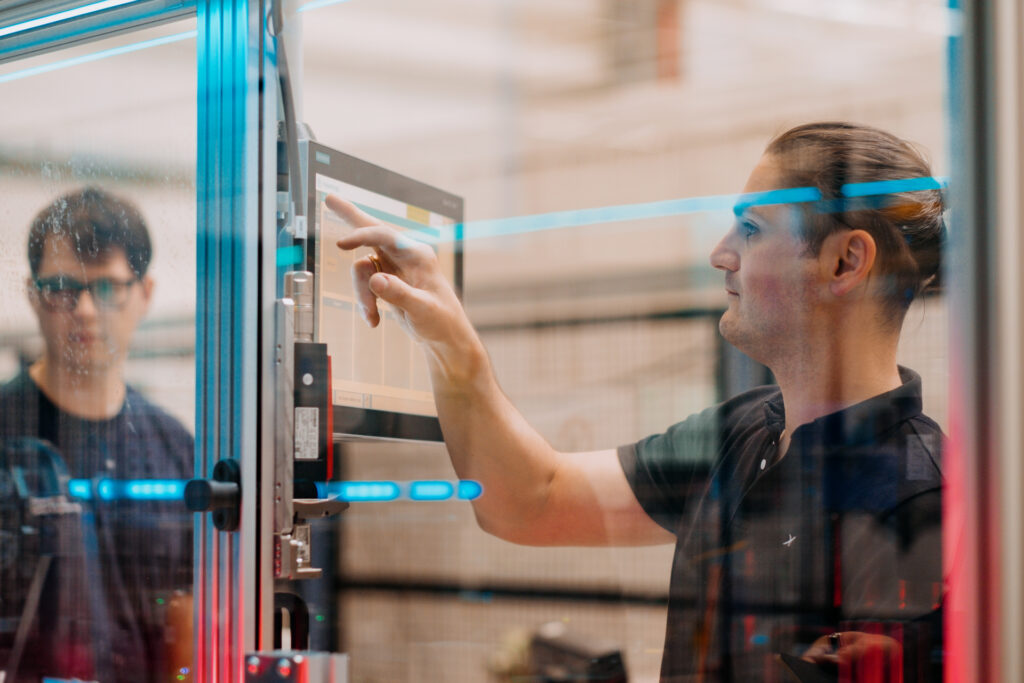
Scepanski says he’s relying on clients like Schoenherr at thyssenkrupp to help improve the Siemens Industrial Copilot. He said some of Siemens’ customers are finding uses for it that he and other engineers hadn’t envisioned.
“One client took existing code, old code they were using, and they said, ‘OK, I don’t know what the code is doing, I don’t know the language.’ They pasted it into the copilot, and the copilot took it and translated into new code and explained what the code is doing,” Scepanski said. “And this was not something that we implemented as a feature, but it comes with the strong capabilities of the generative AI models Microsoft is offering.”
Scepanski said Siemens envisions rolling out versions of Industrial Copilot in many different fields.
“We will see copilots along the entire value chain for different industries, Scepanski said. As examples, he mentioned industries such as infrastructure, transportation, and healthcare. “They have exactly the same issue, lack of skilled labor.”
A broader vision of generative AI
Marcel Pfeiffer of thyssenkrupp says the collaboration with Siemens and Microsoft has been fruitful.
“I think Siemens was looking for two main aspects, a real use case with a real customer behind it and someone who challenges the actual, let’s say, development state of the tool,” he said. “Together we can push the boundaries of the tool to improve it over time.”
He said he envisions this project as the first step in a broader use of Industrial Copilot at thyssenkrupp and the beginning of a revolution in how manufacturing processes are conceived and executed.
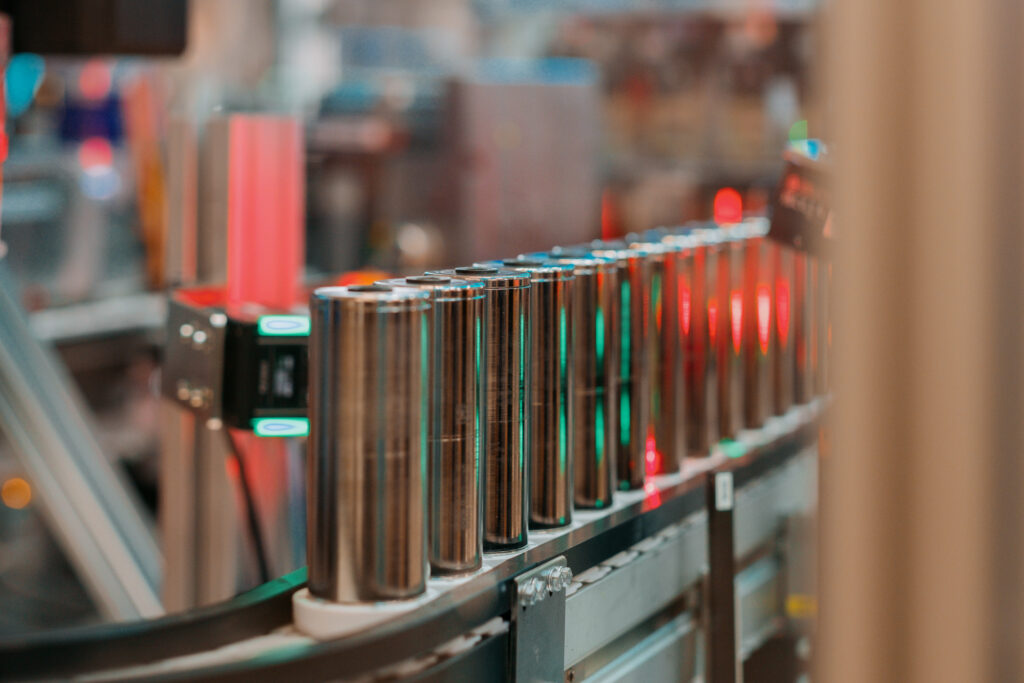
“We plan to use the copilots from the beginning of next year in our serial projects worldwide” Pfeiffer said.
Pfeiffer said that 50 years ago, in general, people considered a machine to be a separate, functional unit. Today, a machine is seen as a connected part of a larger whole – connected to the cloud and to other machines.
“In the future, we will see machinery as a construct of permanent change, because technology is a lot faster moving than the machinery market,” he said. “The Industrial Copilot, especially for engineering, will help a lot to keep up with the pace of that game. In general, I’m convinced that AI copilots will become a game changer for the whole industry.”

